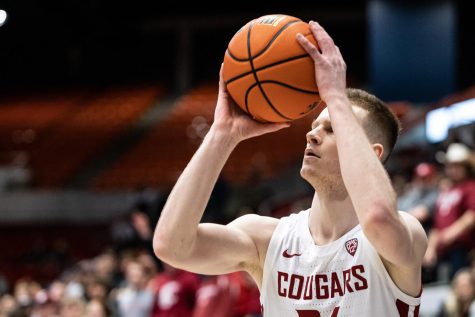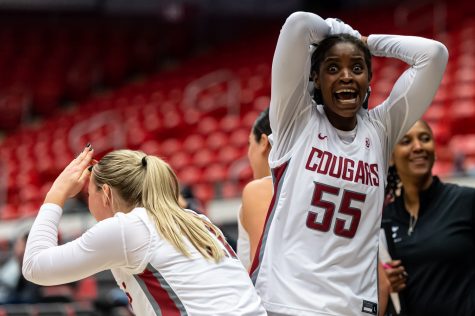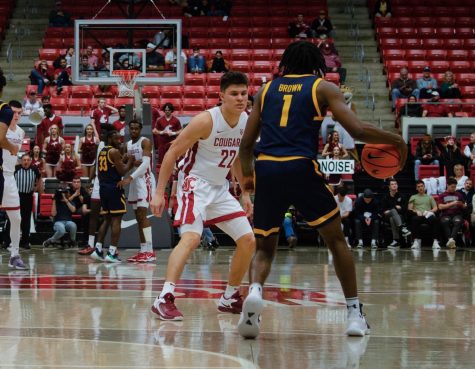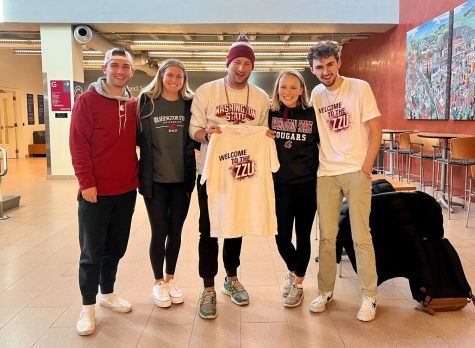Dynamic ticket pricing on the way for WSU
September 20, 2013
There is a new era of ticket pricing in modern-day professional and collegiate sports, and it is truly dynamic.
According to Google.com, dynamic is defined as: (a process or system) characterized by constant change, activity, or progress. What we are talking about of course, is the relatively new ticket pricing strategy that is called dynamic ticket pricing (DTP).
This brings us to our beloved WSU and why I think in the next five years, at the earliest, our athletic department should institute a DTP strategy for Cougar football, and football only.
Cougar football is on the rise, which is exemplified by our first victory against USC in over a decade. While we are likely not bowl-bound this year, it appears that WSU has a good chance of making a bowl game in the next couple seasons under the tutelage of head coach Mike Leach.
This optimism coupled with drastic updates and improvements to Martin Stadium could make a DTP strategy viable in the future. If this were to happen, single game tickets for games such as this past weekend’s bout with Southern Utah University would be priced as low as they would be all season.
However, single game ticket prices for games against schools such as UCLA or University of Oregon would be considerably higher given the higher value of the product because of the quality of the opponent.
This would allow WSU to maximize ticket revenue, not only feeding the football program, but the entire athletic department and every sport within it.
In an economic view, DTP is a brilliant strategy that allows professional and collegiate sport and entertainment entities to maximize ticket revenue. DTP is defined as: The practice of pricing items at a level determined by a particular customer’s perceived ability to pay.
Essentially, a single game ticket price can vary greatly depending on the date, opponent and other varying factors that can alter ticket value.
For example, according to ESPN.com, in late April and early May the Minnesota Twins single-game ticket prices varied between six different prices in just a 10-game span. Tickets for seats in the same section ranged anywhere from $19 to $31, depending on the opponent, day of the week, and game-time.
A game versus the Boston Red Sox was priced toward the higher end of this scale given that fans are more likely to want to watch a successful team with historical significance, while a game versus the Kansas City Royals was priced toward the lower end given their lack of success over past seasons.
Economically, this strategy is one of the savviest inventions in ticket pricing history, because it is obvious that certain games will draw more fans, thus equating to a higher ticket value for that particular game.
On the flip side, certain games against lesser opponents will attract fewer fans, thus equating to a lower ticket value for that particular game. Lowering the ticket price will hopefully draw in more fans, and the expectation is that the lost revenue due to the lower ticket price will be made up for in additional revenues such as parking, concessions and merchandise sales.
Fans haven’t welcomed this strategy with open arms however, exemplified by the severe social media backlash that the University of Michigan received this year after they instituted this strategy for the first time.
Boosters, fans and students took to Facebook and Twitter arguing that Michigan was driving fans out of the stadium and the pricing strategy was unfair.
Unfortunately for these disgruntled fans, their argument of driving people out of the stadium was annulled as Michigan set their all-time single game attendance record in last weekend’s game as 115,109 fans packed into Ann Arbor to watch the Wolverines beat Notre Dame.
This pricing strategy may in fact make it impossible for some cash-strapped WSU fans to attend certain games against higher-level opponents, myself being one of those fans. However, in today’s world of ever-rising overhead costs and competition, the need to make extra revenue is a “necessary evil” – jobs literally depend on it.
More is on the line than ever in professional and collegiate sports. Sport managers must constantly be looking for new and innovative ways to keep fans happy while maximizing revenue, hoping to create a win-win situation.
The reason this strategy should not be instituted right away, however, is due to the fact that the team hasn’t yet reached a point of success that would warrant such a strategy. It could alienate boosters and fans enough to possibly hurt ticket sales, especially given the level of discontent alumni have voiced over the past decade.
This strategy may be on the horizon for Cougar football, however, and if it meant that WSU were to be annually bowl-bound, this die-hard Coug would be in full support.




















